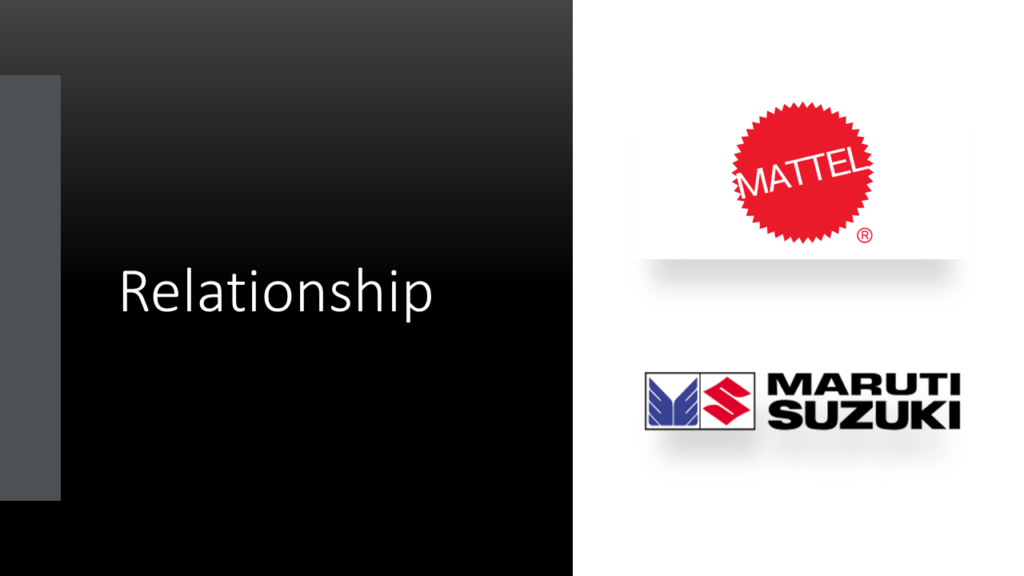Hi,
Today I am going to talk about the relationship of Maruti Suzuki, India’s largest passenger car manufacturer with Mattel, the maker of Barbie dolls and one of the world’s largest toy manufacturers. Let’s find out!!
If you look around, Barbie dolls which were priced low to begin with captured the heart of every girl when they were growing up. Gradually, as the girl became a mother, she ensured that her daughter got a better version of the doll with more frills and fancier clothes – she kept upgrading to a better version of the doll, thereby resulting in greater margins to Mattel on a go-forward basis!!
How is Maruti related to the above? Also, have you ever wondered, why does Maruti have 50% market share in the Indian passenger car market?
Sneak peek into the history of Maruti provides one startling insight. The company started selling its first vehicle, Maruti 800 in 1983 at a price of INR 48,000, less than half the cost of Ambassador (flagship product of Hindustan Motors) then.
This is where the company became successful because they laid the foundation of a Pyramid Business Model.
By pricing their car way below competition, it prevented Hindustan Motors from establishing a connect with its customers. (Hindustan Motors was one of the most credible passenger vehicle companies in India then, with a waiting time of 1 year for its popular, Ambassador (‘Ambi’) model.
Had Maruti sold their cars just around 5% to 10% cheaper than Hindustan Motor’s Ambi, the incumbent would have retorted in all likelihood by reducing its price, thereby resulting in price-war. While the customers would have gained, but Maruti would have been nipped in the bud and would not have been able to become one of the largest passenger vehicle companies in the world today. I covered this concept of Price Simplicity in the 14th episode of my podcast series. You may want to check it out.
Now, coming back to the pyramid model – A true pyramid is a business model in which lower-priced products are manufactured and sold with so much efficiency that it is virtually impossible for a competitor to steal market share by under-pricing the product or the service; hence the lowest tier of the pyramid is known as the firewall.
While Mattel created its firewall by making no-frills Barbie dolls at less than USD 10, Maruti’s firewall tier was created by Maruti 800, which gave way to Alto and WagonR. This is where it kept building huge volumes, like Alto crossed 3 million mark in FY 2016. Net profit margins, however, remained at an average of 6% during this period.
With such thin margins, some of the other global automobile companies, including Toyota, Ford and GM couldn’t infiltrate the Maruti’s firewall tier, thereby enabling it to become mass market darling. We all now know the fate of Ford!! Its slated to exit India after close to 25 years of operations having incurred close to USD 2 billion of losses over this period.
While, Maruti developed Omni, Zen, Esteem and later Swift as higher end-products, real break-through came when they launched their Nexa series through S-Cross in FY 2015 and later Brezza and then Baleno. This is where, volumes gave way to margins. Net profit margins doubled to approx. 10% in FY 2018 over the last 5 years.
While as a company, it followed a Pyramid business-model approach, wherein the lowest priced models enabled it garner 50% market share in the Indian market, the nature of customers also followed a pyramid structure too.
Just like the girl who got hooked on to no-frills USD 10 Barbie doll; As she became a mother, she ensured that her daughter got a much better version of the doll.
Similarly, the customers too formed a hierarchy, with different expectations and different attitudes towards price. While there are customers (usually the first time buyers) who wouldn’t spend more than INR 2.5 lacs for an absolute basic version of Alto 800; there are others who have started to pay upwards of INR 7/8 lacs for Baleno and S-Cross via Maruti’s NEXA show-rooms.
Obviously, for this pyramid-business model to succeed, it needs to be executed mercilessly, which Maruti was able to do successfully over the years by creating the largest dealer network, launching successful models, generating optimal financing options for its customers, maintaining a sold balance sheet with stable cash flows.
Please note that these are my personal views. Request you to conduct your own independent research or consult your financial advisor before investing.
Hope you enjoyed listening to this!!
For more interesting topics, you may check out my website, www.jaagrav.com. If you want to reach out to me, you may email me at vikas@jaagrav.com
Thanks!

